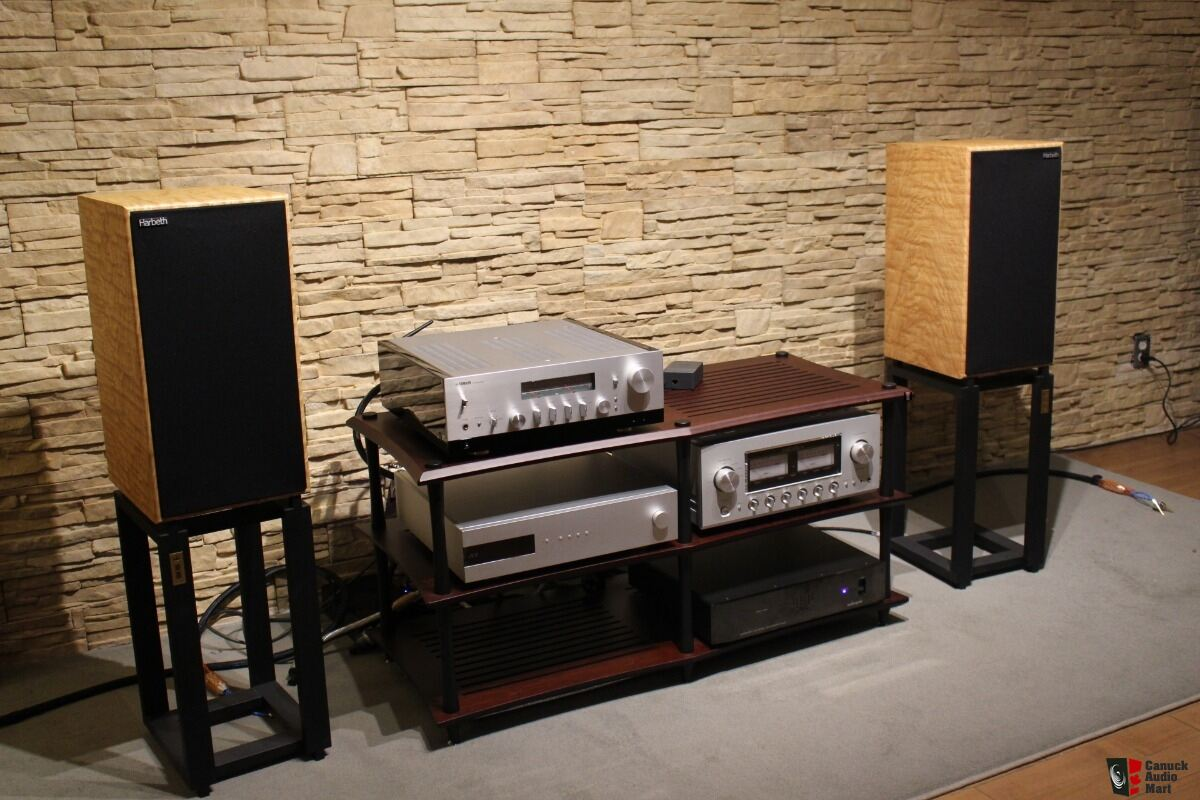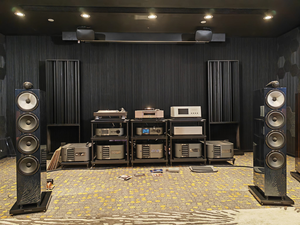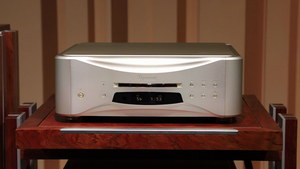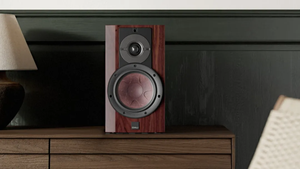
Harbeth C7ES-3 XD and Monitor 40.3 XD Speaker review
Typically, when I embark on a serious evaluation of a speaker system (or any component, for that matter), I play some music and position myself in the listening spot, aligning my ears with the tweeter and maintaining a slightly forward-leaning posture. This was my approach when I listened to Harbeth's Compact C7ES-3 XD, the latest iteration of the brand's C7 model, a lineage that dates back to 1994. Throughout the listening experience, I found it to be a beautifully sounding speaker system – ready to use straight out of the box, without any need for pre-heating or break-in. Alan Shaw, the owner and speaker designer of Harbeth, has always maintained that his speakers do not require such a ritual, a claim that was fully validated in this case and in my reviews of other Harbeth products (they become very smooth and gradually warm up within a few days, after which their break-in is essentially complete).

In the initial weeks, I invited my listening group – a mix of audiophiles and music lovers, some from the industry (both recording and equipment), some musicians – as well as some random visitors who were curious about my pair of test machines. Almost everyone had the same experience as me – within about a minute of listening, these people began to relax, smiles appeared on their faces, and everyone immediately gave high praise to the C7-XD. Those with more experience, extensive knowledge, and high aesthetic standards in the audiophile field listened for longer, some even came back the next day with other test materials, and we also found that this quality did not come at the expense of detail, resolution, clarity, and transparency, nor was there any lack in engagement, definition, liveliness, rich color and texture, rhythmic drive, and dynamic range. Despite its relatively compact size – approximately 50cm x 25cm x 30cm – this speaker was able to produce some excellent loose sound reproduction in my 6.4m x 4.5m x 2.4m listening room and my new office (which is a converted garage, spacious enough to accommodate a decent listening area, which is also where I initially placed them).
Considering that I reviewed the third generation of the Compact 7 – the C7ES-3 – in 2007, I naturally can’t remember the details of the article I wrote at the time, and my impression of the speaker’s sound is also vague. In the 16 years since I returned the third-generation review machine, I have not listened to this speaker again (although two friends bought a pair based on my review and have been very satisfied ever since). Given this situation, I simply didn’t look at the original review, which allowed me to review the new model without being influenced by the past.
This part continued for several weeks, much longer than I originally planned. They were very satisfying, and I increasingly enjoyed going to the listening room to listen to them, perhaps just because they wonderfully reproduced the music, and I also enjoyed connecting them to other components in my review list. One afternoon, I took out one of the albums I've been listening to for a long time, Bernstein’s performance of Bizet's “Carmen” (vinyl and CD), which is the musical content I use for every piece of equipment I review. I originally planned to listen casually and switch to other records once the excitement passed. In the end, nearly three hours passed, I listened to all six sides of the record, including all four acts, and I was completely immersed in it, something that had never happened before.

Whenever I review such compact speakers, I always play a lot of “large dynamic” music, from classical to band to hard rock, just to see how they perform. The Compact C7 XDs performed exceptionally well, they were able to position very accurately and present a wide and deep soundstage, if the record involves drama or story, you might even feel the movement of the actors, such as Bernstein's “Carmen” or Solti's “Ring” and so on. From the opera house to Broadway, to the New York Philharmonic’s performance of Sondheim's “Sweeney Todd”: I haven't listened to this album for many years, and now I'm impressed by this performance full of vitality, conviction, passion, superb skill, and pure adrenaline, a performance that puts you in the scene.

Recently, I've been very fond of Shostakovich's “Fourth Symphony” – that version performed by Myung-Whun Chung and the Philadelphia Symphony Orchestra (DG CD), the sound effect is very good. At the opening, the screeching of the strings is interrupted by the collision of the cymbals, followed by the timpani and reinforced brass, forming a thrilling march. Here, the music is presented with astonishing skill and fidelity, interspersed with intense string fugues, performed by Chung at an incredible speed, theoretically this kind of piece is difficult to reproduce with such high clarity, yet it was easily performed by this famous string orchestra. The dynamic range is astonishing – the orchestration of the late 19th/early 20th century is mostly 80-100 people, in this piece it increases to 140, plus powerful brass and percussion – yet these compact Harbeth speakers are more than capable, even including the climax after the fugue.
The grand piano can also reach such a high level as the entire symphony orchestra. The first piano album I played was Mitsuko Uchida's magnificent new work Beethoven's “Diabelli Variations” (Decca CD and Tidal MQA streaming), which I consider to be one of the best piano works albums in recent years. Decca’s engineers found an ideal angle: to make it close enough to the piano to present it in an exceptionally clear and well-defined form, while maintaining enough spatial sense to avoid the sound being too dry – in fact, these Harbeths excellently reproduced the musician's superb playing skills and fidelity, perfectly presenting the warmth, fullness, deep tonality as well as the gorgeous reproduction of color, subtle differences, and character, these are all the miracles that this outstanding artist is famous for with her famous skilled technique and phrasing. The performance venue is Snape Maltings Concert Hall in England, a hall that appears in many other albums by Uchida (not to mention Benjamin Britten's recordings) and is very familiar. Although I have never been to this place, but this concert hall is known for its combination of warmth and clarity, and this is exactly the effect you can hear through these speakers.
As for vocals? Well, as for the reproduction of sound, it has now become Harbeth's forte, because it goes without saying. Recently, I accidentally found an original LP album on Hyperion Records by Hildegarde de Bingen, the album contains some of her famous pieces and arias, this twelfth-century nun was a mystic, poet, composer, and visionary (she was eventually canonized): “A feather on the breath of God”, performed by Gothic Voices. And recorded by Tony Faulkner, the singer should be slightly back, and the record should have a noticeable presence on the speaker plane. There are only eight singers, they sing solo, duet, trio or quartet, but never the whole group together. Therefore, in the normal understanding of this word, there should not be “depth” between or among the performers, if they sound far away, then your playback chain response is a bit behind. But the sound quality they capture sounds exceptionally real, with a sense of three-dimensionality, roundness, and purity, and the thick atmosphere of the London church is very obvious above, around, and far from them. If you set the volume of the C7 XD correctly, you will hear the effect of the “window of the concert hall” that Peter Walker talked about when designing the QUAD ESLs.

During this period, I still did not review this set of speakers, “just” pure listening and enjoyment. But from a certain perspective, this is actually the most meaningful “review”. After all, isn't unrestricted enjoyment of music exactly what Aristotle said, the “ultimate goal” of our pursuit of home replay music equipment? One afternoon, I wrote down my thoughts, which was the only note I made during this time.
First of all, from my many years of audiophile experience, the C7 XD is the most neutral in most frequency bands, and undoubtedly one of the most natural HiFi speakers. Secondly, its coherence, clarity, and resolution are on par with my long-term self-use components: I'm referring to the third generation of Quad ESL, from 57s to 63s to 2805s. Then, it shows a very low sound stain, which again matches my self-use speakers. It can become a dynamic window, masking its compact size and simplicity, which is an understatement. About two months after I listened to them, I looked at the 2007 review. Based on this, I also suggest that you have a chance to take a look at that review.
In addition to Harbeth's P3ESR XD mini monitor speaker (also known as an ultra-compact speaker), the Compact 7 is Harbeth's entry-level product for those seeking full-range speakers. Its main limitation is that the extreme low frequency (i.e., 20Hz-40Hz) is somewhat weakened, and it cannot produce maximum sound pressure in large rooms. Its -3dB point is at 46Hz, which is actually quite low, enough to cover the range of most acoustic instruments; but this does not mean that the speaker cannot reproduce lower frequencies, it just reproduces them at reduced amplitude and volume (more on this later). Since the mid-1990s, the size and appearance of this speaker have not changed (see specifications), and the units have remained basically the same: a two-way 8-inch bass-reflex mid-bass unit, with a SEAS 1-inch ferrofluid-cooled tweeter. Placing the tweeter at ear level and positioning the speaker away from the front wall and side walls is still the preferred method for achieving the best performance from this speaker (it is recommended to use the manufacturer's stand).
Like all Harbeths products, the C7 XD has a good impedance load (nominally 6 ohms), and if the quality of the amplifier is sufficient, reaching audiophile level or higher, it will not be particularly picky about the amplifier. Its 86 decibel efficiency indicates moderate sensitivity; it is recommended to use at least 25Wpc of high-quality pure power. I tried several amplifiers, with per-channel power ranging from 40 to 180 watts. Whether in the main listening room at home or in my listening room from the garage to the office (which is different in size from my main listening space, but actually has a larger volume), I never felt that I had pushed the volume of the speaker to its limit, even when playing strong rock music such as Paul Simon's “Graceland” or The Rolling Stones’ “Let It Bleed”. The quality of the components, engineering design, assembly, and surface treatment (beautiful wooden finish, perfectly matched pairs), as well as reliability, all meet the standard level of speakers.
Going back to that review from 2007, before I even got to the second paragraph, I read this sentence: “Between approximately 80Hz and 10kHz, there are virtually no problems with the frequency response of the 7ES-3”, and then a conclusion can be drawn: “In fact, given its level and design type (box-type compact two-way), based on my experience, this speaker has become a new benchmark in terms of neutral and natural tonal balance within its usable range, regardless of price”. Considering that I now have little access to the C7ES-3, neither of these two sentences would make me dislike the XD version. Now, I have an advantage that I didn't have at the time, which is that I can use the Dayton Audio OmniMic V2 sound measurement system to measure some of my subjective judgments. I have been using this program for several years now, and I get the flattest, i.e., most linear, readings from one meter on-axis from midrange to 10kHz. Above 10kHz, the response tilts towards 20kHz, and if the speaker does not appear too bright in a home environment, the result should be as you see here, which is why the tonal balance is so natural and fatigue-free.
In any case, after I finished reading my review of the ES-3 version, I played all the records mentioned in that article on the XDs, and quickly found that I came to the same conclusion about almost everything. For example, as I pointed out for the C7ES-3, the new XD is the same–its accuracy in the presence band is actually a bit higher than my QUAD ESL 2805. Another point is: if you swing that way, it is easy to accept tonal correction. Kei Kobayashi’s organ solo concert “Bach: Organ Master Works Volume II” (Claves CD) is a record I didn't have before. The organ enthusiast friend who introduced me to this record visited one day. We were both impressed by the loud and clean sound of the XDs reproducing the “D minor Toccata and Fugue”, and we both thought that although the bass was very good, even quite excellent in some respects, especially considering the size of the mid-bass unit, it could not be compared with his Harbeth SHL5+ or my Monitor 40.3 XD, let alone a good subwoofer, of course we didn't expect it to do that.
Then, for further testing, I went to my McIntosh C53 preamplifier (with 8-band equalizer), and turned the 25Hz and 50Hz knobs to the two o’clock position. This will immediately raise the satisfaction coefficient by several notches (friends, this is one of the reasons why you really need some kind of tonal correction). No, it still can’t be compared with a larger bass unit or subwoofer, but the bass is now very satisfactory. Perhaps even more impressive is that the speaker is very stable when increasing the volume, with no obvious tension. From low frequency to mid-bass and high frequency, the body feel, texture, and clarity presented by the XDs speakers are amazing. When playing the opening part of Liszt's “Second Hungarian Rhapsody” recorded by Stokowski on RCA (SACD or vinyl), the range and power of the double bass and trombone will surprise you, not to mention the clarity and depth of the range.







Comments